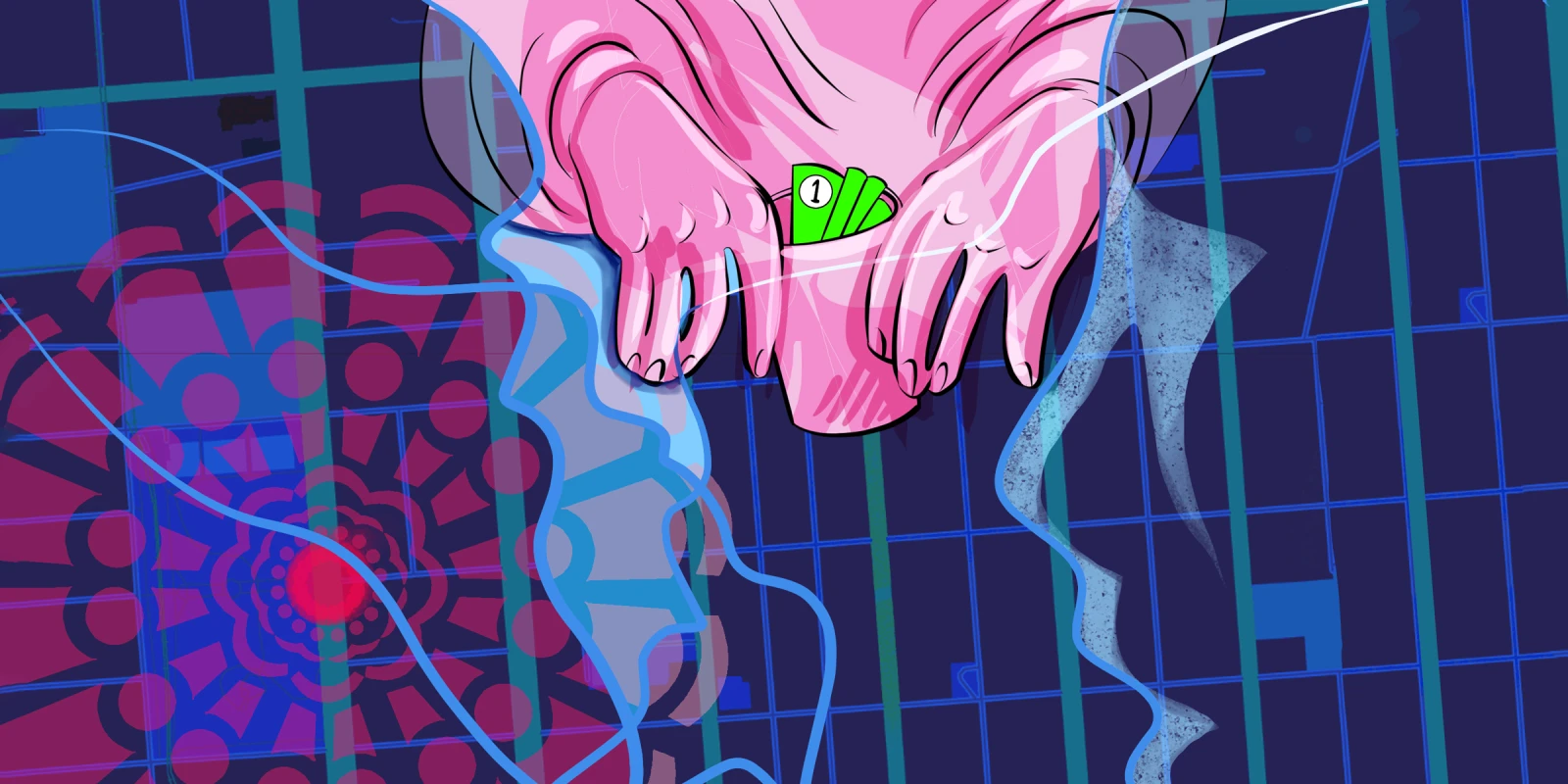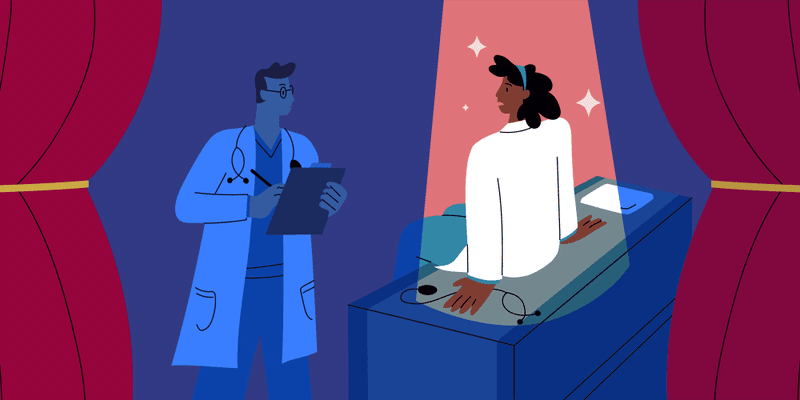“I went into [the ER] with stomach pain and vomiting, and they diagnosed me as ‘homeless’!” Jerry told me, handing over some discharge paperwork as he sat down at his typical table at the soup kitchen’s Saturday lunch. I scanned through the familiar form, gathering that he had vomited a few times, gotten some fluids, an antiemetic, and some Tylenol. After that, he had been able to eat a turkey sandwich and drink some apple juice. Shortly thereafter, his nurse came with his discharge paperwork.
“I wasn’t mad about being told to go, I just don’t get why she said I was sick with “being homeless” when I was throwing up,” he explained. “Besides, they didn’t do anything to fix the homelessness!”
The idea of “sick with homelessness” is a perplexing matter, which prompts questions about what it means to “diagnose” a social problem. In medical school, we are taught to look for specific symptoms, exam findings, laboratory results, and imaging patterns that allow us to contrast typical disease categories from the identified norm. We know that a hemoglobin A1c ≥6.5% asserts a diagnosis of diabetes, and we can consider the harms that can be done to a wide array of bodily tissues by poor blood glucose regulation. Now, through the use of novel International Classification of Diseases Tenth Edition (ICD-10) codes, attempts are being made to collapse social complexity into similarly recognizable shorthand.
The diagnosis of “homelessness” belongs to a set of social determinants of health (SDoH) ICD-10 Z-codes, which are designed to identify social complexities, accounting for the “social, economic, and environmental determinants of health” that shape how our patients live. First implemented in 2016, SDoH Z-codes seek to capture information about the ecological and psychosocial milieu that shape and are shaped by the other ICD-10 codes that patients carry. There are broad categories of these SDoH codes designed to systematically capture information about risk factors for a patient’s health, which include: education and literacy (Z55), employment (Z56), occupational exposures to risk factors (Z57), housing and economic conditions (Z59), social environment (Z60), upbringing (Z62), primary support group (Z63), and psychological factors (Z64). Jerry’s “diagnosis of homelessness” in the ED thus stood in to represent a risk factor for his illness, and a risk modifier that might make him more likely to have a poorer outcome.
Of all the SDoH Z-codes, the CMS reports that “homelessness, Z59.0” is the most commonly reported on a national level. The level of reporting is likely due to the profound and visible ways that a state of being unhoused can shape a person’s health, including specific risks from exposures, and exacerbations of existing disease states due to deprivation. Jerry’s challenged access to essentials including stable sources of clean water and food, exposure to extreme temperatures from sleeping outside, and impaired access to resources for bathing and washing his clothes certainly elevated his risks for disease.
While SDoH Z-codes are designed to help identify ecopsychosocial risk factors that shape a patient’s health and health care access, CMS reports that in general, utilization of these Z-codes for SDoH is relatively low. Driven by documentation burden and limited interventions available when a particular SDoH need is recognized, the “diagnosis” of a social problem is often not made, even when discussed or recognized in health care settings. Screening for SDoH can be a common practice throughout the health care system, via questionnaires filled out in primary care clinics and questions asked of patients in EDs. The ethics of asking about these risks are complicated by limitations in resources that can be offered to meet a patient’s needs. When Jerry was identified as homeless, he might have been offered a list of shelters in the city from the ED social worker. While connection with social workers and community resources are indispensable to ensuring adequate care for patients experiencing homelessness, these resources may often be well known among those who are chronically unhoused. As Jerry felt more comfortable sleeping outside than in a shelter, I imagine an offer for a list of shelters would not have been beneficial to him. In turn, this unaddressed risk factor becomes a source of unease, as what can be offered through our health care institutions cannot address the complexity at hand. This discomfort we feel in caring for a patient with unaddressed social risk may further explain why Z-codes for SDoH remain so rarely utilized.
Physician discomfort with SDoH labels may be justified, as identification of SDoH risks may be associated with stigma. If a diagnosis of “homelessness” is identified in a patient’s medical record, there is a risk that this will be a source of bias that could impact the care that the patient receives. Jerry perceived that his care was impacted by the fact of his identified homelessness. While the discharge summary he received suggested that he received standard of care treatment for his symptoms, I wonder if there had been more to his experience than what had been documented in the discharge summary. Were words or terse glances exchanged about him by members of the care team based on their perceptions of people who are unhoused? How might his charted diagnosis of “homelessness” impact Jerry if he represents to the ED in the future? Is it worth it for this diagnosis to be documented, so Jerry may receive resources from social work? How might his experience be enfolded into statistics about the health of unhoused people in the city? Can those statistics be used to advocate for Jerry and people like him?
Jerry’s question prompted a cursory investigation of the use of these SDoH Z-codes codes at my medical school’s hospital system. Paralleling national claims data, homelessness was the most commonly used SDoH Z-code in our hospital system as well. Among patients identified as “homeless,” this ICD-10 code was often identified as both the underlying etiology prompting the patient to seek care, as well as the most costly condition addressed during the encounter.
Employing these SDoH Z-codes more consistently may help identify patients and communities at risk for poor health outcomes. From a population health perspective, the codes can become data useful for quantifying a community’s needs, or prompting research and policy work to better address recognized disparities. While the utility of SDoH Z-codes from a population health perspective is evident, the collection of this data remains challenged by low utilization, and limited ability for clinicians to intervene when risks are identified.
How do you use SDoH Z-codes in your practice or in your hospital? Share in the comments.
Dr. Michaela C. Barry is a third-year internal medicine resident and aspiring infectious disease fellow currently living in Pennsylvania. She credits her medical school and residency communities for helping develop the thoughts she shares here. Dr. Barry is a 2023–2024 Doximity Op-Med Fellow. She thanks Theresa Green, PhD MBA for her interest in SDoH Z-codes.
All names and identifying information have been modified to protect patient privacy.
Illustration by April Brust







